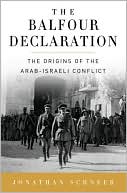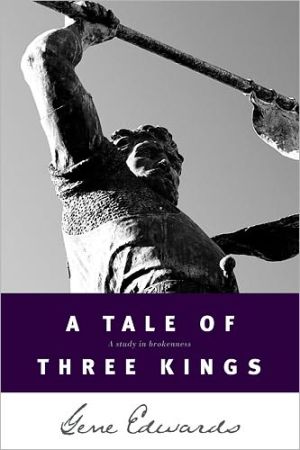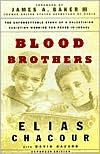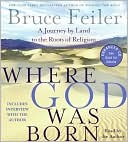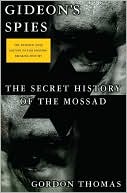Arab and Jew: Wounded Spirits in a Promised Land, Revised and Updated
The Jew, according to the Arab stereotype, is a brutal, violent coward; the Arab, to the prejudiced Jew, is a primitive creature of animal vengeance and cruel desires. In this monumental work, David Shipler delves into the origins of the prejudices that have been intensified by war, terrorism, and nationalism.\ Focusing on the diverse cultures that exist side by side in Israel and Israeli-controlled territories, Shipler examines the process of indoctrination that begins in schools; he...
Search in google:
The Jew, according to the Arab stereotype, is a brutal, violent coward; the Arab, to the prejudiced Jew, is a primitive creature of animal vengeance and cruel desires. In this monumental work, revised and more relevant than ever, David Shipler delves into the origins of the prejudices that have been intensified by war, terrorism, nationalism, and the failure of the peace process. "The best and most comprehensive work there is in the English language on this subject." (Walter Laqueur, The New York Times) "A rich, penetrating, and moving portrayal of Arab-Jewish hostility, told in human terms." (Newsday) Publishers Weekly The Jew, in the Arab stereotype, is a brutal, violent coward; the Arab, to the prejudiced Jew, is a primitive creature of animal vengeance and cruel desires. There is remarkable symmetry in these images, as Shipler (Russia: Broken Idols, Solemn Dreams points out in this hefty mixture of reportage, personal histories, interviews and scholarship. An act of courage and clarity, the book is an important contribution to the literature on the Middle East. The New York Times correspondent shows how Israeli Jews deny the reality that Palestinian Arabs are victims of forcible displacement and expulsion from what was once their homeland; he describes how a ``synthetic Israeli history'' is taught to Jewish schoolchildren, while Palestinian boys and girls in the refugee camps are taught militant rhetoric and hatred. Shipler explores the corrosive effects of terrorism by both sides, the zeal of Islamic fundamentalists, as well as that of Israeli ultraconservatives. BOMC and History Book Club alternates; first serial to the New York Times Magazine. (September 24)
Foreword to the Revised EditionForeword to the First EditionIntroductionPt. 1Aversion1War: Earth of Brass32Nationalisms: Paradise Lost353Terrorism: The Banality of Evil664Religious Absolutism: Isaac and Ishmael122Pt. 2Images5The Violent, Craven Arab1656The Violent, Craven Jew1837The Primitive, Exotic Arab2058The Alien, Superior Jew2319Segregation and Class24510Sexual Fears and Fantasies26711Mirrors of Semitism28912The Holocaust300Pt. 3Interaction13A Mingling of Cultures32714Fire in the Desert35715Secret Police in an Open Society37116Arab Citizens of the Jewish State39217The Sin of Love43418The Dream457Epilogue: Twilight War, Twilight Peace511Notes533Index539
\ Publishers Weekly - Publisher's Weekly\ The Jew, in the Arab stereotype, is a brutal, violent coward; the Arab, to the prejudiced Jew, is a primitive creature of animal vengeance and cruel desires. There is remarkable symmetry in these images, as Shipler (Russia: Broken Idols, Solemn Dreams points out in this hefty mixture of reportage, personal histories, interviews and scholarship. An act of courage and clarity, the book is an important contribution to the literature on the Middle East. The New York Times correspondent shows how Israeli Jews deny the reality that Palestinian Arabs are victims of forcible displacement and expulsion from what was once their homeland; he describes how a ``synthetic Israeli history'' is taught to Jewish schoolchildren, while Palestinian boys and girls in the refugee camps are taught militant rhetoric and hatred. Shipler explores the corrosive effects of terrorism by both sides, the zeal of Islamic fundamentalists, as well as that of Israeli ultraconservatives. BOMC and History Book Club alternates; first serial to the New York Times Magazine. (September 24)\ \ \ \ \ Library Journalint affairs The political and military dimensions of the middle Eastern crisis are the common stuff of headlines and books; Shipler focuses instead on the human dimension. In portraits of Arabs and Jews from all walks of life and political perspectives, he examines the ``attitudes, images, and stereotypes that Arabs and Jews have of one another, the roots of their aversions, and the complex interactions between them. . . .'' The effects of war, nationalism, terrorism, religion, and history come to life, illuminated by Shipler's insights drawn from his five-year residence in Jerusalem and his wide reading. While he concludes with a dream of a peaceful society growing out of direct links among the youth of the two groups, he offers no promise that such a dream can survive the hatred, fear, and pain. Highly recommended. Elizabeth R. Hayford, President, Assoc. Colls. of the Midwest, Chicago\ \


